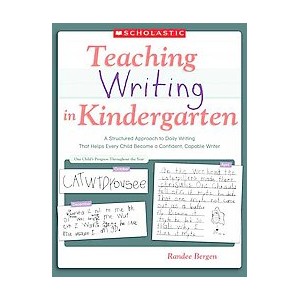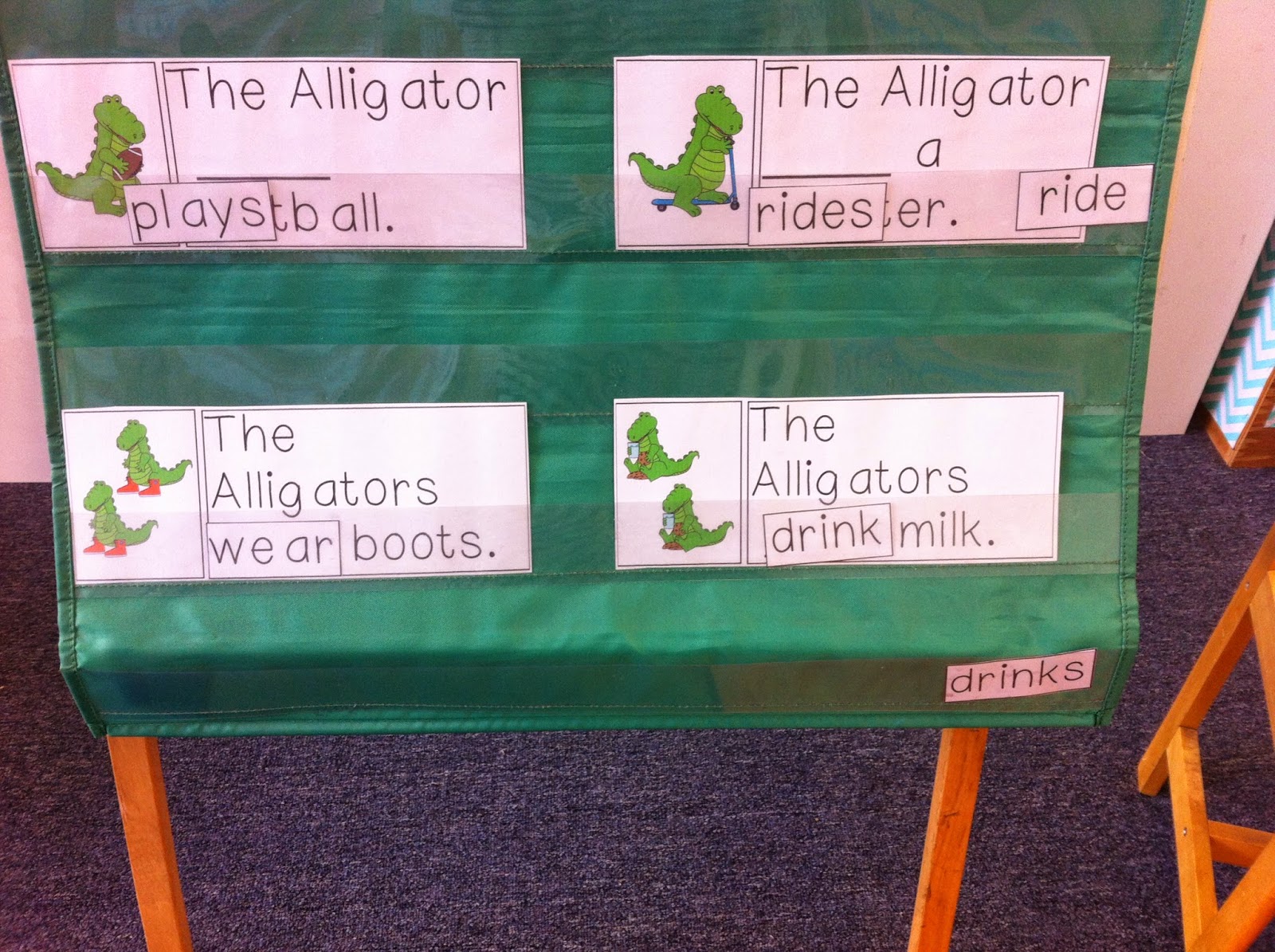Hello friends!
It has been a busy, busy week in Kindergarten. We are finishing up our last Language Arts unit, doing so many tests that I can't even see straight, and trying to have fun with pre-summer activities. Today we finished up our last writing sample of the year and I wanted to share a little bit about how I teach writing in Kindergarten.
When I first started teaching I thought that Five and Six year olds would only be able to write about one or two sentences by the end of the year. Boy, was I wrong. I soon discovered that many of them quickly learned to do much more than what I expected and I decided that I needed to have higher expectations for them.
I purchased this fantastic book and it changed my life (or maybe just the way I teach writing which sometimes feels like it is my life).
I realized that year that (most) Kindergartners love writing and that I love seeing them do so well. I was so excited that I wanted to tell everyone about their amazing progress and I started keeping a writing portfolio that I'm going to share it with you now! :)
Every year I have the kids do a writing sample on the first day of school. I explain that I know they haven't had a lot of practice writing journals yet, but that I would like them to do their very best to draw a picture of themselves and write a little bit about themselves even if all they can write is their name. Here is what the samples usually look like on that first day:
From that day on, we dedicate at least thirty minutes a day to writing time. At the beginning of the year we do a lot of directed drawing and labeling pictures, and as time goes on they each get their own composition journal for primary grades and start doing daily journal entries. I try to take a writing sample every trimester and I show them how much they have improved. They love seeing how great their writing is compared to the last sample and many of them try to go back and fix the mistakes in their old ones so I have to keep an eye out for that!
The beginning of year writing templates and ideas for keeping a writing portfolio came from Heidi's blog and you can get a copy for yourself here.
1
It has been a busy, busy week in Kindergarten. We are finishing up our last Language Arts unit, doing so many tests that I can't even see straight, and trying to have fun with pre-summer activities. Today we finished up our last writing sample of the year and I wanted to share a little bit about how I teach writing in Kindergarten.
When I first started teaching I thought that Five and Six year olds would only be able to write about one or two sentences by the end of the year. Boy, was I wrong. I soon discovered that many of them quickly learned to do much more than what I expected and I decided that I needed to have higher expectations for them.
I purchased this fantastic book and it changed my life (or maybe just the way I teach writing which sometimes feels like it is my life).
Anyways, Randee Bergen is my hero! She has suggestions and resources for starting to incorporate daily writing time from day 1 and helping students continue to improve throughout the year. I read the entire book in about two days and followed her directions step by step the next school year and I have to say, I was blown away by the results. My little ones came in barely able to write their names legibly and left writing me full pages of sentences with capitals at the beginning, punctuation in the right place, proper spacing, sight words spelled correctly, etc...AND they made sense!
I realized that year that (most) Kindergartners love writing and that I love seeing them do so well. I was so excited that I wanted to tell everyone about their amazing progress and I started keeping a writing portfolio that I'm going to share it with you now! :)
Every year I have the kids do a writing sample on the first day of school. I explain that I know they haven't had a lot of practice writing journals yet, but that I would like them to do their very best to draw a picture of themselves and write a little bit about themselves even if all they can write is their name. Here is what the samples usually look like on that first day:
From that day on, we dedicate at least thirty minutes a day to writing time. At the beginning of the year we do a lot of directed drawing and labeling pictures, and as time goes on they each get their own composition journal for primary grades and start doing daily journal entries. I try to take a writing sample every trimester and I show them how much they have improved. They love seeing how great their writing is compared to the last sample and many of them try to go back and fix the mistakes in their old ones so I have to keep an eye out for that!
Here are some mid-year/close to end of the year samples:
And here are some of the end of year samples that we did today:
Here are the pictures of one of my students' work throughout the school year:
here's a closer look at that End of Trimester 3 writing:
The beginning of year writing templates and ideas for keeping a writing portfolio came from Heidi's blog and you can get a copy for yourself here.













































